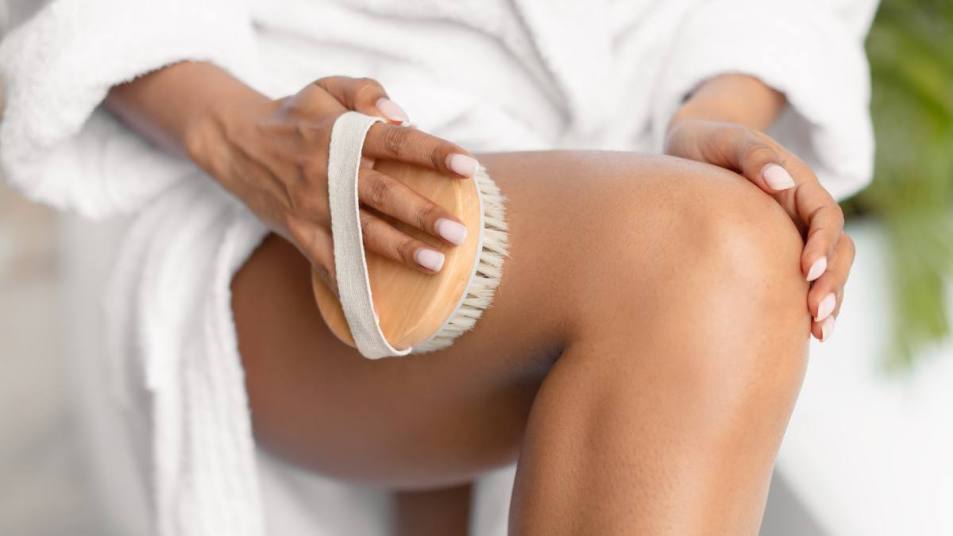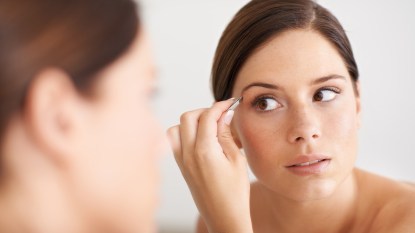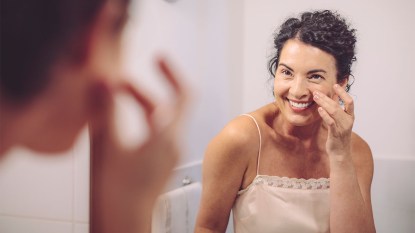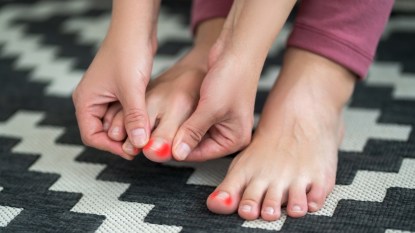Dry Brushing Your Skin Fights Cellulite & Leaves You Glowing: How to Get the Perks
The latest viral craze has ancient roots — learn why MDs swear by it!

It’s no secret that the older we get, the more difficult it becomes to fight off wrinkles, sun spots, dryness and other skin woes. Unfortunately, aging comes for us all, even the most disciplined SPF users. Of course, for every age-related skin ailment, there are half a dozen potential treatment options. Social media is overrun with influencers and celebrities touting the benefits of red light therapy, various chemical exfoliants, retinol products, vampire facials and so much more. Many of these treatments claim to be cutting-edge, but all too often that translates into “short-term beauty fad.” Luckily, it turns out one of the most effective skincare strategies is an ancient, affordable practice called dry brushing, and it just might be the self-care practice you’ve been looking for. Keep scrolling for more on the benefits of dry brushing.
What is dry brushing?
The name says it all. Dry brushing is the practice of using a dry, stiff-bristled brush to brush your skin the same way you would your hair. Essentially, “It’s exfoliation of body skin,” says Vivian Chin, MD, a board-certified cosmetic physician and founder of Koru Wellness. You can dry brush several areas of your body, from your face to your legs, belly, chest and arms.
Dry brushing is an ayurvedic practice, which means it originated in India and has been practiced for centuries. In fact, some scholars believe that ayurveda is the oldest healing practice, even older than traditional Chinese medicine or homeopathic remedies.
Other ayurvedic practices include yoga, herbal medicine and oil pulling. And although more research needs to be done to make any conclusive claims about these wellness strategies, they are accepted and practiced in many parts of the world, including by almost a quarter of a million people in the United States.
Related: Top Dentists: Oil Pulling Won’t Whiten Your Teeth, But Here’s Why You’ll Want to Try It Anyway
What are the benefits of dry brushing?
Fans of dry brushing claim the practice provides dozens of benefits, including (but not limited to!) exfoliating skin, removing toxins from the skin, improving digestive problems, removing cellulite and supporting your immune system. Dry brushing also improves the flow of lymph fluid in your body, to help with weight loss.
“Scientific research on these specific claims is limited,” says Alexis Pfropper, licensed esthetician and founder of asthetik skincare. “However, many individuals report experiencing a sense of invigoration and well-being after incorporating dry brushing into their routine.”

In other words: The benefits of having a relaxing self-care routine alone may be worth the effort. And although many of the touted benefits are currently just anecdotal, it’s certainly true that dry brushing is exfoliating, which has plenty of proven benefits — especially for those of us hoping to retain our youthful glow.
“Any type of exfoliation brings newer skin to the surface and helps you ‘glow,’” explains Dr. Chin. “This can also prime your body skin to absorb moisture better.” And according to research in the Journal of the American Society of Plastic Surgeons, exfoliation can even help slow down external signs of aging. Hydrated, glowy skin with fewer wrinkles? That’s music to our ears.
How to dry brush your skin
“The natural bristles of a dry brush encourage lymph movement to help move built-up toxins,” says women’s health expert Jennifer Weinberg, MD, author of The Whole Cure. “I dry-brush my body for 10 minutes each morning.” New York City dermatologist Debra Jaliman, MD, is also a fan of dry brushing — especially when it comes to helping flatten your belly, telling us, “The brushing motions act like a massage to help break up fatty deposits while promoting circulation to help expel the excess fluids and trapped toxins that ‘bulk up’ the midsection.”
To dry-brush your belly, try this: Using brisk, clockwise motions, brush clean, dry skin along the stomach with a firm-bristled dry brush (like EcoTools Dry Body Brush) for a few minutes. Then, use the brush to make long, gentle strokes toward your heart, paying special attention to the feet, neck and chest. Repeat a few times a week.
For more on what it is, watch the video below!
You can also dry brush your face. Check out these easy step-by-step directions on how to dry brush your face.
Related: This Winter Skin Care Routine Will Leave You Glowing: Top Dermatologists’ Best Advice
Who can benefit from dry brushing?
Like most types of exfoliation, dry brushing is safe for nearly everyone.
“Someone who has very sensitive or thin skin might not like the feel,” says Dr. Chin. She also recommends avoiding the practice if you have any rashes or open wounds, because “this could make the issue worse.”
Rachel Lozina, New York State Licensed Esthetician and owner of Blue Water Spa, recommends avoiding exfoliation if you’re on any sort of blood thinners or suffering from body acne. “The bristles on the dry brush are very stimulating to the skin, and in response to that stimulation, your body brings more blood flow to the area,” Lozina explains. Therefore, “if you are prone to bruising or if you have open cuts or wounds on your skin, I would not recommend dry brushing.”
For more skincare secrets, click through the links below!
Why Everyone Is Buzzing About Matcha Benefits for Skin + How It Can Help Women Over 40
This Easy At-Home Gua Sha Facial Gets Your Skin Glowing + Relieves a Headache Fast
This Winter Skin Care Routine Will Leave You Glowing: Top Dermatologists’ Best Advice













